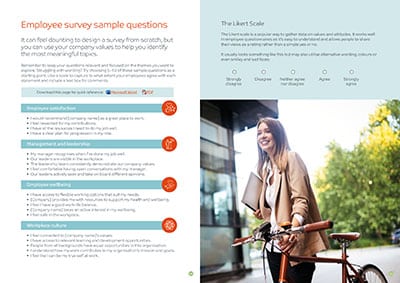The latest report by the Health and Safety Executive (HSE), found that there were an estimated 875,000 cases of work-related stress, depression or anxiety in 2022/23, leaving many prone to burnout. These rates are higher than reported pre-pandemic levels and are still rising.
This is worrying for workplaces as stress continues to be the main cause of short and long-term absence. The CIPD found that:
- 75% of employers observed presenteeism in the office.
- 77% observed presenteeism among employees who work at home.
- 60% observed ‘leavism’ in their organisation in the last 12 months.
The theme for Stress Awareness Month 2024 is ‘little by little, a little becomes a lot’. The cost of burnout to the economy reached approximately £28 billion in 2023. This figure is costing the government more than Brexit. It is vital to the economy for businesses to identify signs of stress, look after employee wellbeing and make positive shifts to reduce the impact on both personal and professional lives.
Watch: Beyond the burnout: Proactive tips for building a resilient workforce
Spotting the signs of burnout
Stress is a natural response to dealing with pressure, but too much of this is detrimental to our health and wellbeing. Some common signs of burnout have been identified as:
- Feeling tired or drained most of the time
- Feeling detached/alone
- Having a cynical/negative outlook
- Feeling overwhelmed
Knowing what to look for is the first step towards healthier workplace wellbeing, followed by identifying cause and offering support. In the Mental Health UK survey on their 2024 burnout report, they found that nearly half of participants say their employer does not have a plan to spot or support people who are dealing with chronic stress.
What workplaces can do to combat stress
Having a good workplace culture can encourage openness about stress, mental health and wellbeing. Our research shows that the vast majority (86%) of employees say they’re more productive at work if there’s a good culture, while 85% say there’s a link between workplace culture and wellbeing. Positive workplace culture drives productivity, concentration and overall health of employees.
Our survey found that the most common theme for supporting employees with burnout is giving advice and guidance for employees to help manage their workloads. 56% said high or mismanaged workloads was the biggest contributor to burnout in their company.
Mark Pinches, Head of Coaching at Westfield Health, shares three quick tips aimed at reducing employee stress:
- Encourage a wellbeing culture where stress and mental health can be discussed openly.
- Show you care – connect with employees one on one.
- Support employees with building their own resilience through coaching; use models like the circles of influence to provide employees with tools to deal with stress.
If your team is struggling with stress or burnout, it’s important to take action, know what strategies are effective for preventing burnout and how to handle high-pressure situations. For more information, read our blog on how to prevent burnout.
Resources
Use our interactive e-book on wellbeing strategy to better manager stress in your organisation, drive a positive culture change and help your people build positive habits that stick.
Download the pdf.
